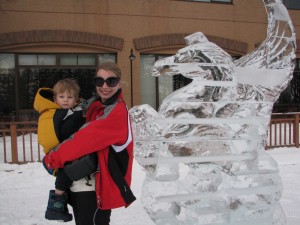Hypothermia
Hypothermia means a reduction in core body temperature below that which allows the body to function properly (35ºC). Hypothermia does not require freezing temperatures to occur. Just like frostbite however, it is riskier the colder, wetter, and windier it is. Children are more likely to get hypothermia the longer they are exposed to the cold and if they are not dressed appropriately. Exposure to cold water is a particular risk. Symptoms of hypothermia include feeling cold, pale skin, shivering, loss of concentration, drowsiness, confusion, dizziness, slurred speech. Obviously some of these symptoms are hard to determine in babies and small children who may be pre-verbal.
Prevention of hypothermia
- Dress your child warmly in multiple layers. These may include: thermal underwear, skivvies, jumpers, water-proof clothing, hats, gloves and boots. Cover extremities!
- Keep your child dry. If they become wet bring them inside to warm and change them.
- Bring your child inside to warm up intermittently. Tempt them inside with warm beverages such as soup or hot chocolate.
- Limit the time outside according to weather conditions.
Treatment of hypothermia
If you suspect that your child has hypothermia seek immediate attention from a doctor. In the meantime:
- Bring the child inside and remove wet clothing.
- Give the child a warm (not hot) bath.
- Dry the child and put them in warm clothes including a hat.
- Put them in bed covered with blankets.
- Once again avoid massaging the skin.
Other tips when travelling to cold climates
- The body needs more calories when in cold weather. Breastfed babies should adapt to this need themselves however breast-feeding mums should increase their calorie intake. You may need to increase the feeds of formula fed babies (be guided by babies hunger). Don’t be surprised if young children request more food than usual and be prepared with energy dense snacks and larger portions sizes.
- Take care when driving. In freezing conditions black ice may be on the road even if there is no snow. Take local advice to fit cars with snow chains.
- Always carry warm clothes in the car for yourself and your children. This includes even short drives from home to the shops. Minor traffic incidents like sliding into a snow drift can become tragic if you are not prepared.



